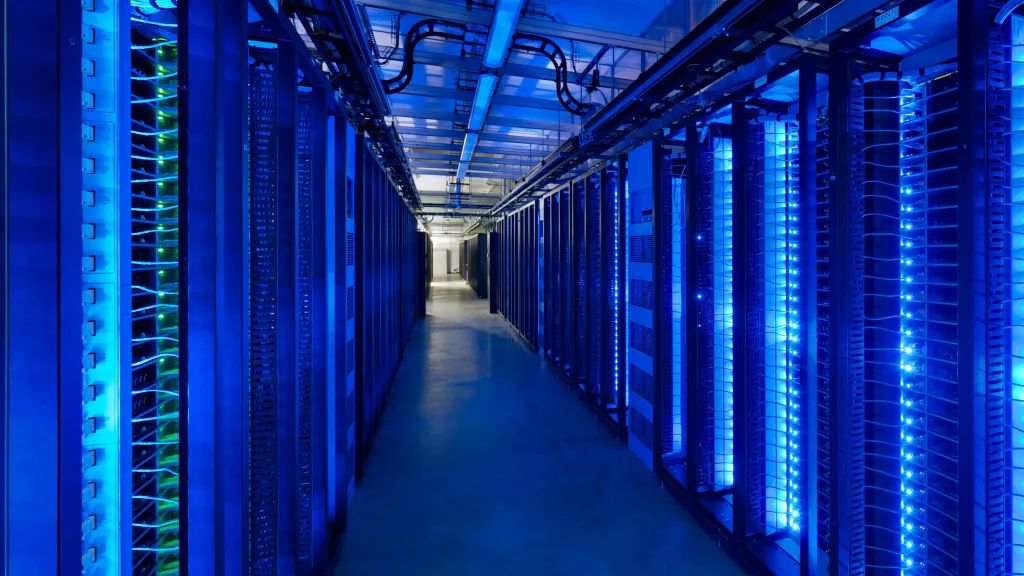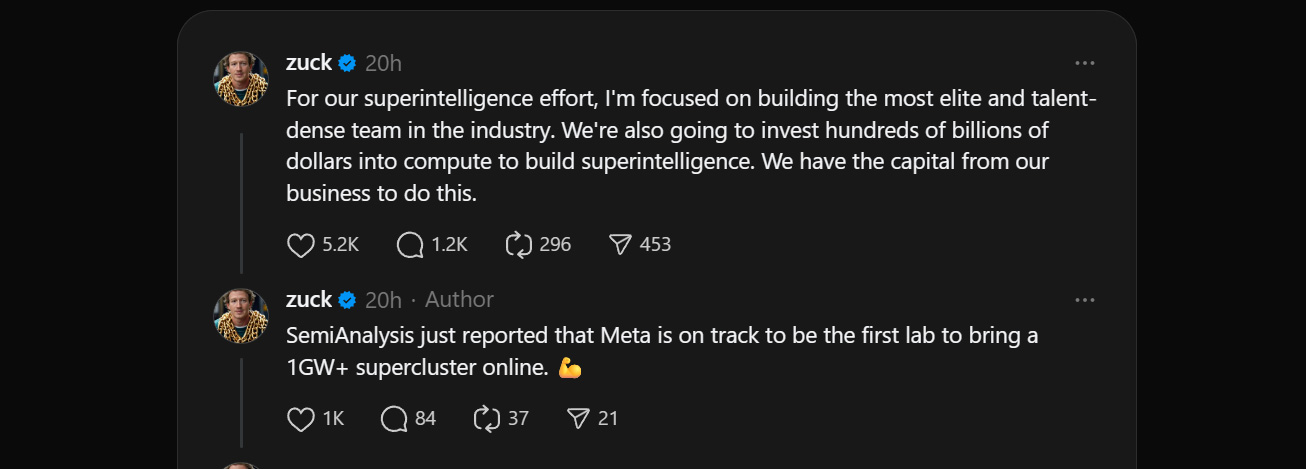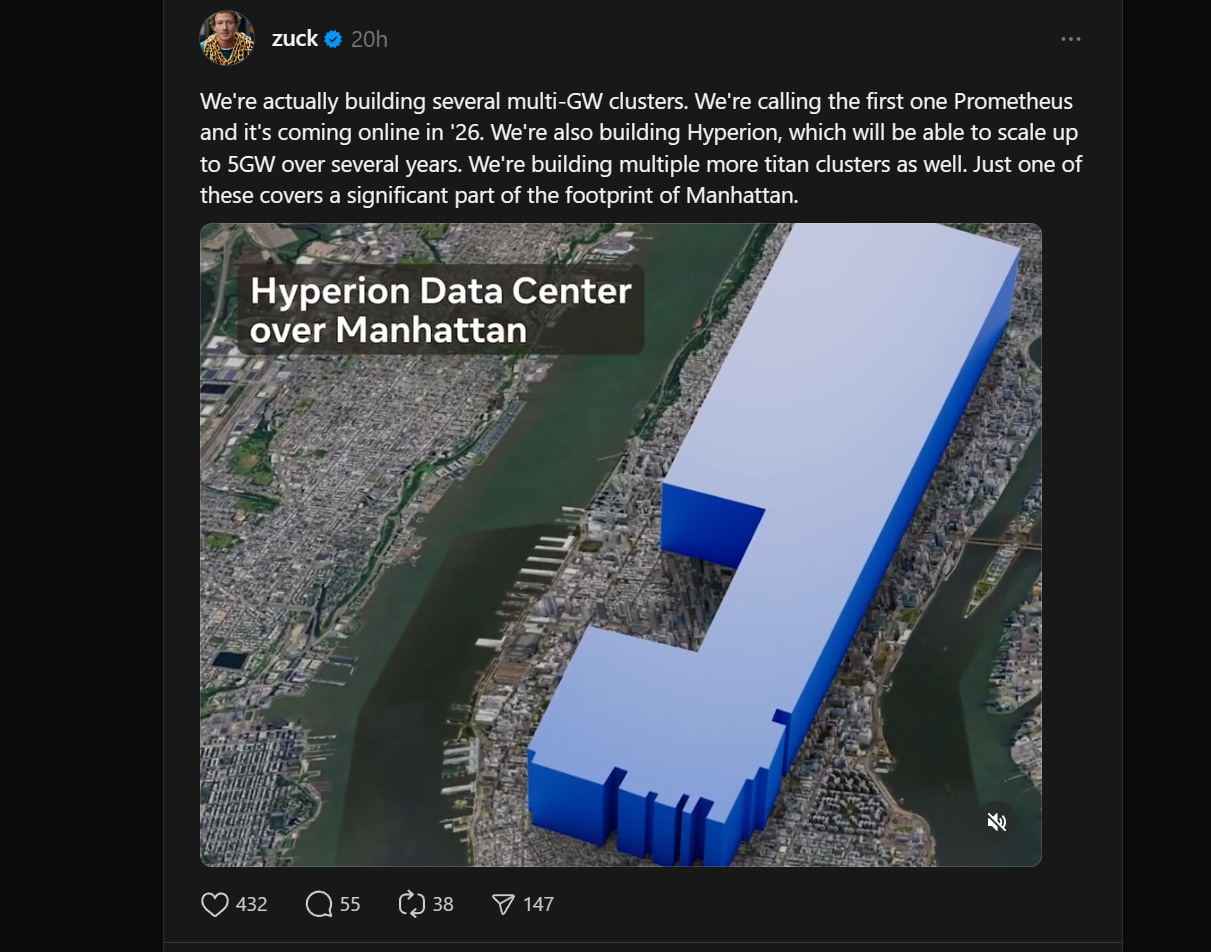
Meta is accelerating its investment in the infrastructure it believes will be needed to power the future of artificial intelligence training and inference, with a number of high-capacity, fast-deployment data centers. CEO Mark Zuckerberg outlined plans for gigantic, "multi-GW clusters" at truly gargantuan scale, and he's doing it extremely quickly by leveraging a number of cost and time-saving measures inspired by xAI. Meta is also building "tented" data centers, rather than traditionally roofed structures.
Deservedly, much has been said about the Meta's talent warsBut underrated is their extensive, vast, and fast moving infrastructure plan. They are moving fast like the early days but at 1000x the scaleSo fast that they are putting GPUs in tents Do you feel the AGI yet anon? https://t.co/Ayk347I4ey pic.twitter.com/TPLuyyrH3RJuly 12, 2025
Even if no one has quite made the AI business model profitable yet, that isn't stopping the world's largest tech companies from investing a collective hundreds of billions of dollars in powering the AI future they are so sure is coming. Alongside Nvidia pushing $500 billion global datacenter investment, and Elon Musk's xAI shipping a power station across the world, Meta is building a number of gigantic datacenters of its own. One of those will reportedly be as large as a sizeable portion of Manhattan.
Although its Llama models might not be capturing the AI zeitgeist like Meta hoped, it may soon be leading the way in domestic AI compute power. Earlier this month, Semi-Analysis reported that Meta will be the first company to build out and deploy a gigawatt-scale datacenter for AI. That will give it over three billion TFLOPS of compute power, we're told. And according to Mark Zuckerberg, this is just the beginning.

The 1GW "Prometheus" datacenter will come online in 2026, but Meta is also building "Hyperion," he said, which will take a few years to build up to scale and will eventually require as much as 5GW of power. Meta is also working on several other data centers in the longer term, and each of these "titan clusters" could be as large as a sizeable portion of Manhattan.

The self-styled "Zuck" went on to say that "Meta Superintelligence Labs will have industry-leading levels of compute and by far the greatest compute per researcher," which may hint at the business model Meta is targeting. If it can't build the AI itself, perhaps it could join Amazon and other entities, like Groq, in providing the infrastructure to power it.
That competition will mean Meta needs to scale up fast if it wants to be competitive, and that seems to be exactly what it's doing. Semi-Analysis detailed how Meta has reinvented its datacenter strategy about building them with AI in mind. Meta will reportedly use a new "tent" style of structure that is faster to build and has less redundancy to further increase the pace of deployment. Where traditional data centers have backup diesel generators should they encounter a power outage, the new Meta sites will do away with that entirely.
They will also leverage pre-fabricated power and cooling modules and will draw power from on-site meta substations, with smart workload management tools helping to maximize the power available to each datacenter. That can also include on-site natural gas generation, too, with Meta already building two 200MW natural gas plants in Ohio.
Follow Tom's Hardware on Google News to get our up-to-date news, analysis, and reviews in your feeds. Make sure to click the Follow button.







